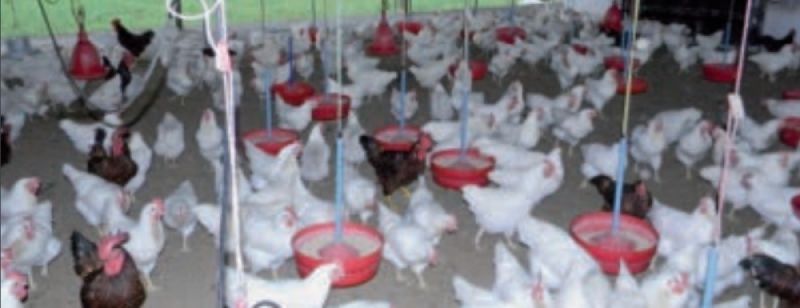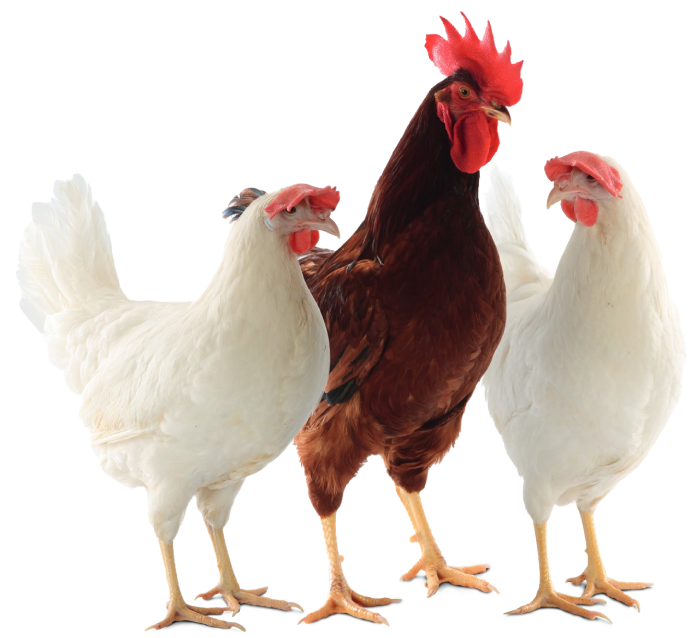The history of commercial poultry production in Nepal is not a very long one,
but birds have been traditionally raised in backyards for meat and eggs for ages.
Selected dual purpose pure line birds were introduced through a government programme about 50 years ago. About 35 years ago, modern hybrid birds were introduced. Big developments in the poultry sector have been observed in the last one and half decades.
With the inception of commercial farming, the poultry business has emerged as one of the major sources of income and has rapidly generated growing enterprises. However, it is still a long way from present conditions to rear poultry in a scientific and professional manner to generate profitability where threats by different kinds of diseases and continuously increasing feed costs not only just narrow the profit margin, but also cause losses.
According to industry sources in Nepal, the per capita consumption is only 46 eggs per year which is far below the average of 120 eggs for Asia. Therefore, there is a scope of increase of the market size by three folds which is only possible with modern methods of farming.
Modern methods of farming can not only improve the present growth pattern of the poultry industry, but also keep the prices of production under control and hence, contribute to an increased demand of poultry products, due to the affordable prices and rising consumption of the population. With the rising demand for poultry products and existing farmers expanding their operations, new investments are also on the rise. There are one billion Nepalese Rupees (NPR) in the pipeline for investments in the coming year in different parts of the country.
As a natural rule, the increased poultry production is also facing a lot of challenges with pathogen and disease load, high feed cost as well as unorganized markets. To convert this challenge into opportunity, one LOHMANN franchise hatchery, National Breeders Nepal (P) Ltd. is constructing new sites with climate control, automatic feeding, automatic egg collection sheds and fully all-in all-out facilities. This kind of facility will be the first of its kind in the Nepalese poultry industry. National Breeders Nepal (P) Ltd. is focusing to get the best productivity from parent stock flocks and supply best quality chicks, which will cumulatively benefit competitiveness and the bottom line of its own operation as well as egg producing farmers. This trend is expected to be followed by other operators too.
Dr. Tilchand Bhattarai, President of Nepal Poultry Entrepreneur Forum and Managing Director of Pancharatna Feeds Pvt. Ltd., said that the number of commercial layers is also projected to go up by 24 % to 5.7 Mn from the present 4.6 Mn. However, the production of eggs is expected to go down to 1.11 pieces due to the shortage of layer chicks, which is being attributed to drops in the parent stock chick population by 5.7 % to 86.000, in view of the recent price hike in raw materials, low imports and diseases, all of which, have also threatened the poultry industry of Nepal. Despite all those facts as well as regular power cuts and adverse climatic conditions, the country’s poultry sector has registered an impressive growth of 24 % and records a turnover of NPR 41 billion rupees in the fiscal year 2010/2011.
I would like to take the opportunity to thank Mr. Tanka Dhakal, (Managing Director Brown Bird Hatchery Pvt. Ltd.), Dr. Tilchandra Bhattarai (Managing Director Pancharatna Feeds Pvt. Ltd.), Mr. Kapil Khanal, Mr. Tikaram Adhikari (National Breeders Nepal (P) Ltd.) and all the commercial farmers for their continuous support in making LOHMANN BROWN No. 1 in Nepal.
Dr. Manoranjan Sharma
Parent stock facilities in Nepal
Selected dual purpose pure line birds were introduced through a government programme about 50 years ago. About 35 years ago, modern hybrid birds were introduced. Big developments in the poultry sector have been observed in the last one and half decades.
With the inception of commercial farming, the poultry business has emerged as one of the major sources of income and has rapidly generated growing enterprises. However, it is still a long way from present conditions to rear poultry in a scientific and professional manner to generate profitability where threats by different kinds of diseases and continuously increasing feed costs not only just narrow the profit margin, but also cause losses.
According to industry sources in Nepal, the per capita consumption is only 46 eggs per year which is far below the average of 120 eggs for Asia. Therefore, there is a scope of increase of the market size by three folds which is only possible with modern methods of farming.
Modern methods of farming can not only improve the present growth pattern of the poultry industry, but also keep the prices of production under control and hence, contribute to an increased demand of poultry products, due to the affordable prices and rising consumption of the population. With the rising demand for poultry products and existing farmers expanding their operations, new investments are also on the rise. There are one billion Nepalese Rupees (NPR) in the pipeline for investments in the coming year in different parts of the country.
As a natural rule, the increased poultry production is also facing a lot of challenges with pathogen and disease load, high feed cost as well as unorganized markets. To convert this challenge into opportunity, one LOHMANN franchise hatchery, National Breeders Nepal (P) Ltd. is constructing new sites with climate control, automatic feeding, automatic egg collection sheds and fully all-in all-out facilities. This kind of facility will be the first of its kind in the Nepalese poultry industry. National Breeders Nepal (P) Ltd. is focusing to get the best productivity from parent stock flocks and supply best quality chicks, which will cumulatively benefit competitiveness and the bottom line of its own operation as well as egg producing farmers. This trend is expected to be followed by other operators too.
Dr. Tilchand Bhattarai, President of Nepal Poultry Entrepreneur Forum and Managing Director of Pancharatna Feeds Pvt. Ltd., said that the number of commercial layers is also projected to go up by 24 % to 5.7 Mn from the present 4.6 Mn. However, the production of eggs is expected to go down to 1.11 pieces due to the shortage of layer chicks, which is being attributed to drops in the parent stock chick population by 5.7 % to 86.000, in view of the recent price hike in raw materials, low imports and diseases, all of which, have also threatened the poultry industry of Nepal. Despite all those facts as well as regular power cuts and adverse climatic conditions, the country’s poultry sector has registered an impressive growth of 24 % and records a turnover of NPR 41 billion rupees in the fiscal year 2010/2011.
I would like to take the opportunity to thank Mr. Tanka Dhakal, (Managing Director Brown Bird Hatchery Pvt. Ltd.), Dr. Tilchandra Bhattarai (Managing Director Pancharatna Feeds Pvt. Ltd.), Mr. Kapil Khanal, Mr. Tikaram Adhikari (National Breeders Nepal (P) Ltd.) and all the commercial farmers for their continuous support in making LOHMANN BROWN No. 1 in Nepal.
Dr. Manoranjan Sharma

Parent stock facilities in Nepal






